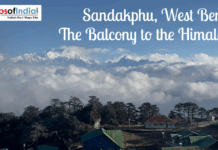Shantiniketan is a neighbourhood in West Bengal, India’s Birbhum district, part of Bolpur town. It is located around 152 km north of Kolkata. Maharshi Devendranath Tagore founded the town, which his son Rabindranath Tagore subsequently added to. Since establishing Visva-Bharati, Shantiniketan has gained a reputation as a university town. It was included on the UNESCO World Heritage List in 2023.
About
In West Bengal, India’s Birbhum district is the little town and educational centre known as Shantiniketan. Rabindranath Tagore, the 1901 Nobel laureate, founded it. The name Shantiniketan, which means “abode of peace,” captures the calm and peaceful atmosphere of the location. Renowned for its distinct approach to education, Shantiniketan integrates the finest elements of Western and Indian customs. The school uses the “Brahmacharya Ashram” model, in which instructors and students coexist in a close-knit community. Shantiniketan’s curriculum strongly emphasises a holistic approach to education, emphasising the growth of critical thinking, creativity, and a close bond with the natural world. The institution has been crucial to Bengal’s and India’s intellectual and cultural rebirth.
History
Shantiniketan’s history begins in 1863. At this time, Debendranath Tagore, the father of Rabindranath Tagore, leased 20 acres of property in the Bolpur region. He named the location Shantiniketan, which means “the abode of peace.” The region as a whole became known as Shantiniketan throughout time. Because of Debendranath’s efforts and the community’s backing, it grew.
When Rabindranath Tagore was just 17 years old in 1878, he made his first trip to Shantiniketan. Debendranath committed the entire estate to the construction of a Brahmavidyalaya in 1888. It was an institution of higher learning founded on Brahmoism. Subsequently, Patha Bhavana was the name given to this school. Rabindranath Tagore established Visva Bharati in 1921. 1951, it was designated as a core university and an important national institute.
Cultural Significance
Shantiniketan has been a hub for fostering literature, the arts, and cultural events for more than a century. It developed into a centre for the Bengal Renaissance, drawing intellectuals, artists, and scholars worldwide and in India. Painting, sculpture, music, dance, and theatre were the artistic disciplines the organisation supported and cultivated. Shantiniketan’s cultural environment was impacted by Tagore’s concentration on the arts and his conviction that creativity and nature are inextricably linked. The organisation organises several cultural festivals and events year-round, including the well-known Poush Mela, which features traditional rural fair food, folk music, dance, and handicrafts. Generations of authors, actors, and artists have drawn inspiration from Shantiniketan, adding to the rich cultural legacy of the nation and the area.
Addition of Shantiniketan to the UNESCO World Heritage List
Under the name “Rabindranath Tagore’s Santiniketan,” Shantiniketan was included in the UNESCO World Heritage List 2010. This acknowledgement acknowledges the institution’s importance in history, culture, and education and its connection to Rabindranath Tagore. Shantiniketan is recognised as a site of worldwide significance and is protected for future generations by its UNESCO World Heritage designation. Shantiniketan’s placement in the esteemed list results from its peaceful campus, architectural designs, and rich cultural and educational legacy.




